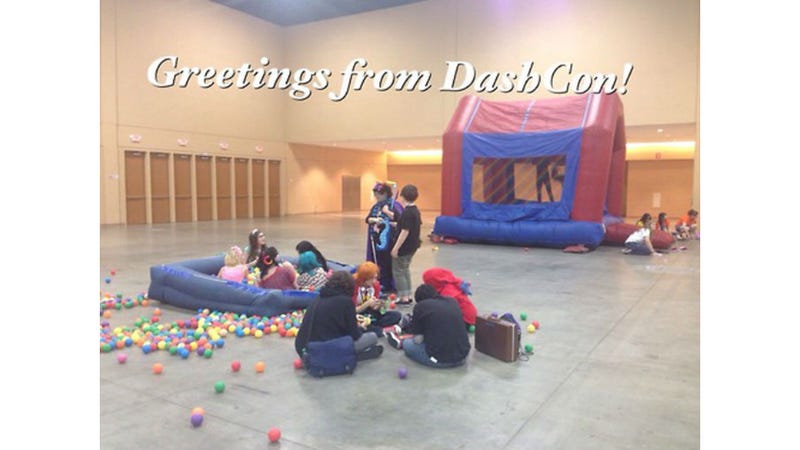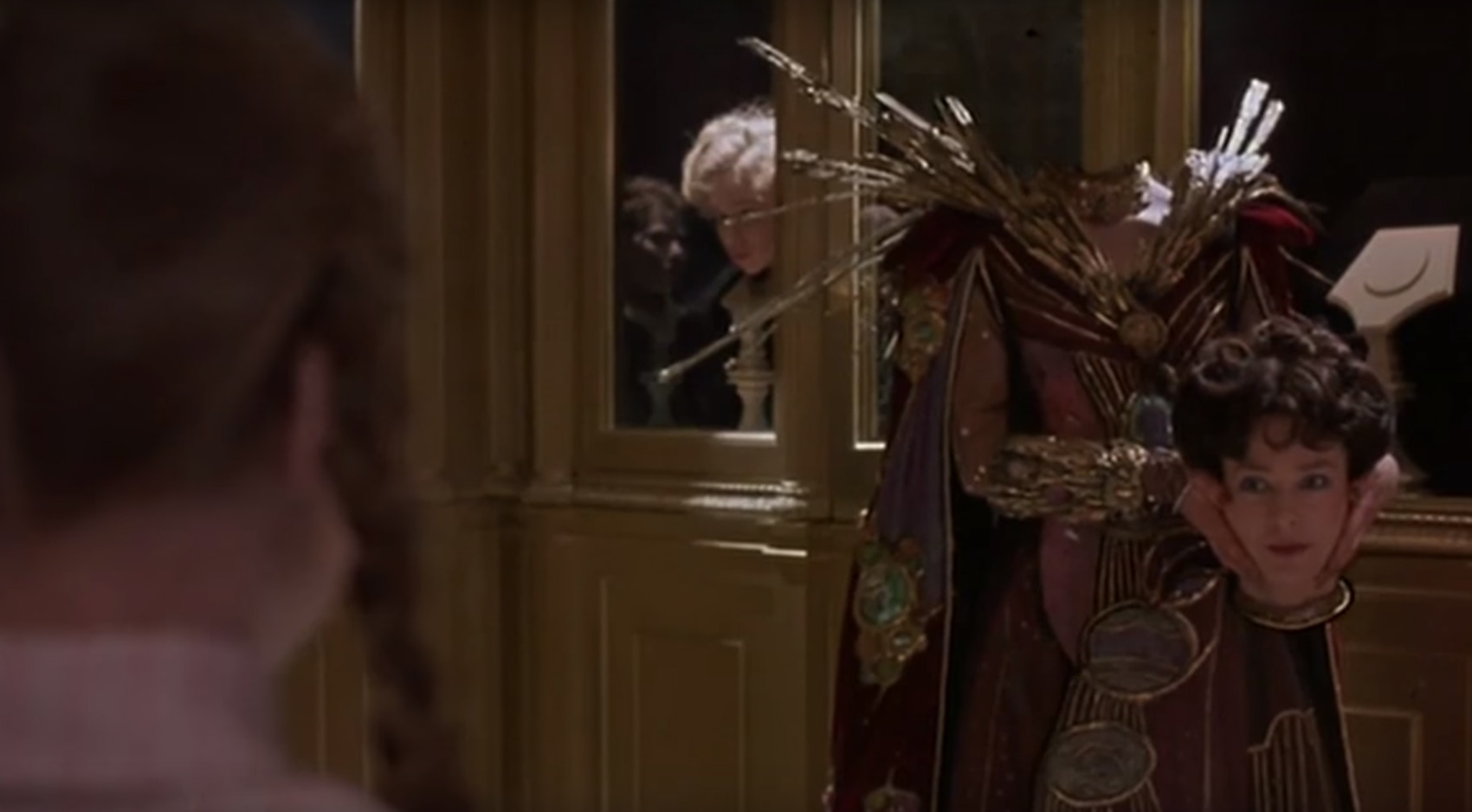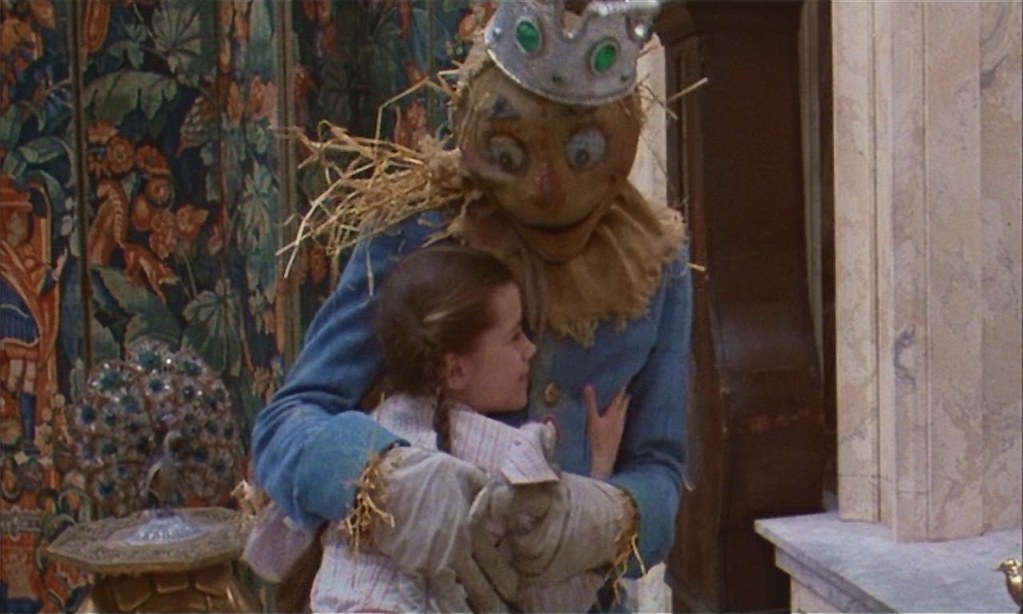Return to Oz is a 1985 dark fantasy film released by The Walt Disney Company, and is heavily regarded as a cult classic, a loyal adaptation of the books by L. Frank Baum, and one of the scariest family films of all time. In some respects, the film is superior to The Wizard of Oz, serving as a spiritual sequel to the 1939 classic.
For this analysis, we shall be taking a look at the symbolic meanings behind the story and imagery of Dorothy Gale’s journey throughout the film. The major psychological symbolism of the film is Dorothy’s decision to choose between reality and fantasy, and the damage she had done to her own mind because of her indecisiveness and lack of judgement. As a sequel to The Wizard of Oz, the film carries over the question whether or not Oz is a real place or just a dream, leading to a lot of mental imprinting from the real world into Dorothy’s imagination and subconsciousness.
The film opens with Dorothy lying in bed, obsessed with Oz, and has become an insomniac because of her issues. Whether or not Oz is real is immediately brought up, Aunt Em and Uncle Henry dismissing it as a child’s imagination-turned-obsessive fantasy, brought on by Dorothy’s trauma from the tornado.
Dorothy’s life is not exactly good. Uncle Henry is trying to rebuild the farm whilst in debt and suffering from a limp. Dorothy is aware of this, but remains caught up in her own troubles to help out. Dorothy sees a shooting star pass by her window and assumes it means something good is to come.
Aunt Em decides to take Dorothy to see a therapist, Dr. Worley, who specialises in electroshock therapy. The next day, Dorothy finds a key shaped like the Oz emblem, assuming it was sent by her friends and they are in trouble. She tries to show it to Aunt Em as proof, but her aunt dismisses it as being from the old house and silences Dorothy’s attempts to argue.
They head on out to the clinic, but Toto gives chase, concerned for his master’s welfare. Dorothy scolds her dog and leaves him behind, symbolising the beginnings of her separation from her innocent fantasies, but also her key connection to home.
At the clinic, Dorothy tells Dr. Worley about her adventures in Oz. Worley is a charismatic man, but his ambition and reputation are more important to him than the needs of his patients, as revealed later on when it turns out patients are locked in the cellar due to being mentally damaged by the ECT.
Worley asks Dorothy about the Ruby Slippers, which serve as a tie-in to The Wizard of Oz. The slippers represent the link between the conscious and subconscious mind, allowing Dorothy to return to reality and symbolise the power she has over her own mindscape. Dorothy reveals the slippers were lost, implying her understanding between fantasy and reality is mixed and distorted. Worley shows her his ECT machine, which will play a hand in Dorothy’s descent into her psyche, and the basis for Tik-Tok.
Dorothy sees a reflection of a girl in the ECT machine, who we later learn is Princess Ozma. Ozma symbolises Dorothy’s true subconscious self and possibly her conscience. Dorothy is the only character who interacts with Ozma in Kansas, so it is possible that she is not real - though that wouldn’t explain how she got a jack o’lantern.
Aunt Em leaves, and Dorothy is locked in a room by the creepy Nurse Wilson until her operation. Seriously, she gives Nurse Ratched a run for her money!
Ozma appears, giving Dorothy the jack o’lantern and asks why she was brought to the clinic. Representing Dorothy’s conscience, Dorothy is effectively talking to herself and accepts the knowledge that Oz might just be made up. Ozma’s question also hints to Dorothy that the clinic is dangerous, informing us that Dorothy is subconsciously aware that something is wrong.
Dorothy gets escorted to the operation room to get her brain zapped. Let’s say for the sake of this analysis and theory, Dorothy undergoes the ECT, has a complete dissociation from reality, escapes the clinic, falls into the river, and later washes up on the bank while experiencing her journey into her subconscious. The blackout symbolises Dorothy’s dissociation from reality due to the trauma of the ECT.
Ozma appears and rescues her, revealing the fate of other patients. Dorothy finally realises the clinic is dangerous and flees out into the equally deadly storm with Ozma, pursued by Nurse Wilson. The two girls fall into a river, Dorothy surviving but Ozma drowns. This symbolises Dorothy’s submergence into her mind, and losing her conscience, who would guide her back to reality.
Dorothy wakes up in the Deadly Desert, a vast wasteland where everything that steps into it dies and turns to sand. This represents Dorothy’s inner despair and fear, losing herself in her subconscious, and the loss of her identity caused by the ECT.
She is accompanied by a talking chicken named Billina. Said chicken appeared on Dorothy's farm, so Billina is Dorothy’s sole connection to home and reality, but also a voice of logic and reason, asking questions about Oz and reminding Dorothy of home, and thus reality. Her egg is also significant to the plot, representing new life and hope, later killing the evil Nome King. The two leave the desert and explore Oz. However, the rocks around her are literally watching her and report back to the Nome King, who is Dr. Worley’s counterpart in Oz.
The Nome King represents Dr. Worley’s influence over Dorothy’s mind. Both characters wish to erase all memory and trace of Oz’s existence. Worley is obsessed with the power of his machines, viewing the human brain as a machine which can be influenced and controlled, but his experiments have led to patients being injured and locked away.
The Nome King transforms all of the Ozians into lifeless statues or ornaments, reflecting the need to stamp out all of Dorothy’s imagination and free will. His true goal is to become human, or rather become the controller of a human mind, namely Dorothy’s, replacing her subconscious with his own, representing Dr. Worley’s desire to control the mind through ECT. This also explains why the King is terrified of Princess Ozma getting out, knowing it she would help Dorothy regain her willpower. The Nome King also symbolises Dorothy’s depression, which threatens to consume her from within.

Dorothy travels to the Emerald City where she discovers all of the citizens have been turned to stone. The Tin Man and the Cowardly Lion are amongst the victims, whilst the Scarecrow has been kidnapped by the Nome King. The trio represent wisdom, love, and courage, but they are suppressed by the Nome King’s influence. Scarecrow, in particular, represents Dorothy’s common sense, wisdom, and understanding, but also her physical brain which faces destruction by Dr. Worley’s experiments. The loss of losing one’s mind is symbolised throughout the film.
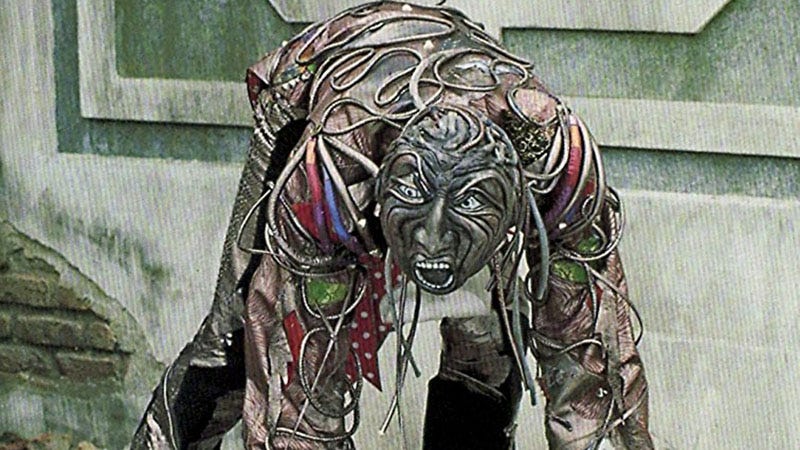
It is at this point in her journey that Dorothy encounters the menacing, psychotic Wheelers. Out of all of the monsters in Return to Oz, they have to be the scariest. They are demonic humans who have wheels for hands and feet. Inspired by the orderlies in the clinic and their squeaky-wheeled stretchers, the Wheelers bring with them chaos, terror, and act as the twisted enforcers of the Nome King’s new laws. The Wheelers chase Dorothy, stating that chickens are banned in Oz - i.e. bringing new life, imagination, and individualism.
Dorothy and Billina then meet Tik-Tok, the clockwork man who serves as the Royal Army of Oz. Tik-Tok is a robot powered by three wind-up keys which control his thoughts, speech, and movement, but they wind down easily. He represents a multitude of things like inner strength, logic, reason, self-control and restraint, but also the limitations of the human mind, as seen when his mind breaks down and becomes erratic.
His Kansas counterpart is the ECT machine, symbolising how it was designed to support Dorothy’s mind. Dorothy does not blame the machine but rather Dr. Worley, so it appears as a friend. Tik-Tok may also represent the Ego of Dorothy’s mind, suggested by Sigmund Freud, to be the organized, realistic part of the brain which keeps the other two parts, the Id and Super-ego in check.
Dorothy, Billina, and Tik-Tok go outside where he beats up the Wheelers, easing the chaos in Dorothy’s mind. They then meet Mombi, the evil witch who serves the Nome King and now poses as the new ruler of Oz. Mombi has an ability to swap her head with those of other characters, namely women who have had their heads removed.
Mombi symbolises Nurse Wilson, a cruel, sinister figure who abuses others, and is thus nasty towards Dorothy. The interchangeable heads and personalities symbolises Dorothy’s madness and loss of identity, Mombi threatening to remove Dorothy’s head to add it to her collection. Though sentient, the heads are only hosts for Mombi, and are truly hollow, symbolising the patients hurt by the ECT.
There are over thirty heads, with Mombi’s original head locked up in Cabinet #31, the same number of Dorothy’s room at the clinic. Interestingly, 31 is a number associated with “El”, another name for God. In Oz, Dorothy is considered an almighty figure of mythic properties, while Mombi is god in her domain, her true self hidden in Cabinet #31 with her source of power (the magical Powder of Life).
Mombi locks Dorothy and Billina up in the attic of the royal palace to eventually take Dorothy’s head. Tik-Tok’s action key ran down, immobilising him and Dorothy’s sense of self-preservation. It is here that we meet Jack Pumpkinhead, a Scarecrow-like character, who is childlike, innocent, naive, and quite dependent on others. He was created by Ozma and is her son, later referring to Dorothy as his mother til he finds his real one.
Jack represents Dorothy’s innocence and childhood but also her vulnerabilities. He also serves as a substitute for her conscience (Ozma) til she is found. He may also represent the Id of Dorothy’s mind, driven by simplicity and a need to feel things. However, this is debatable, since he later claims he won’t miss such sensual things before undertaking the Nome King’s game of doom.
Dorothy comes up with an idea to escape Mombi, fixing Tik-Tok, before going to retrieve the Powder of Life. This part is the darkest and scariest part of the film, with Dorothy awakening the real Mombi, who rages and screams hysterically, wanting Dorothy dead. She represents Dorothy’s lingering madness, causing Tik-Tok’s brains to run down. Dorothy gets lost whilst running away, but Ozma’s image shows her the right way. Dorothy and Jack bring the Gump to life, a mismatched creature made from furniture and a moose-like head, showing that Dorothy’s imagination and creativity still exists.

The Gump himself is a rather snarky, honest, and gloomy character, representing Dorothy’s rationale but also her sense of mortality, since he has already died once and been reborn. Mombi leaps into the room but our heroes escape the castle and fly across the Deadly Desert. We learn Ozma was trapped in a mirror by Mombi, who claims no one remembers her or her true lineage as Queen of Oz. Dorothy has misplaced her conscience and need to return home.
The Wheelers give chase to the Gump but several fall into the Deadly Desert and die, pretty much symbolising their end as a threat to Dorothy’s subconscious. However, without her conscience (Ozma) and wisdom (Scarecrow), Dorothy’s mind is starting to fracture, as seen when the Gump falls apart midair and the gang crash land on the Nome King’s mountain without dying. The group rebuild the Gump, symbolising Dorothy beginning to rebuild her mind.
The Nome King appears to Dorothy and friends, dragging them down into his throne room where he reveals the Emerald City was created from stolen gems and blames the Scarecrow. The Emerald City was the centre of Dorothy’s subconscious until destroyed by the Nome King, his mountain now the source of power and influence within, stealing the emeralds and Dorothy’s wisdom/common sense. The emerald itself is associated with love, hope, wisdom, and appropriately, a healer for a troubled mind. The Nome King took the emeralds to crush all of these elements of Dorothy’s psyche.
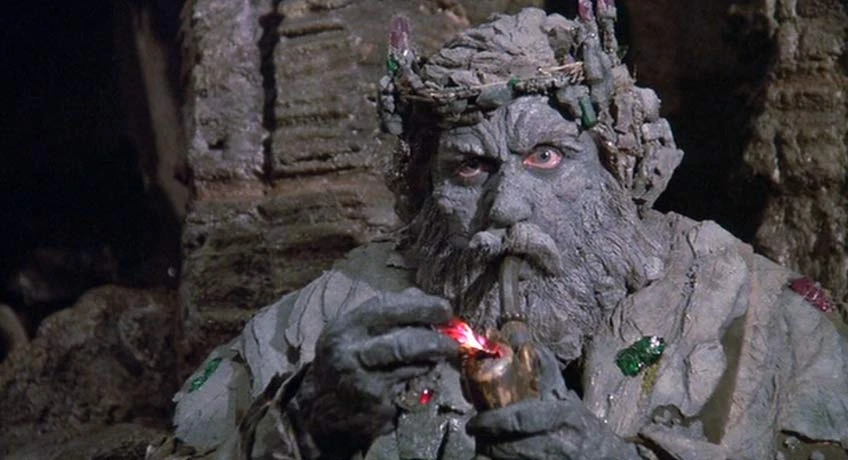
The Nome King challenges Dorothy and friends to a rather cruel game - he has changed the Scarecrow into an ornament and hidden him in a vast chamber of antiques. Each character (save the hidden, unseen Billina, whose eggs can kill Nomes) has three guesses to identify the Scarecrow and he will be freed if they guess correctly. However, if they lose, they will become an ornament too. Such a fate represents the damage done to the patients and further destruction of the mind.
The Gump goes first but quickly loses, possibly due to his weakened sense of judgement. Jack also fails, due to his Id-based lack of thinking, as described by Tik-Tok, claiming Jack has many excellent qualities but “thinking isn’t one of them”. Dorothy agrees, beginning to doubt her ability to win, leading to her friends’ defeat. During this, the Nome King is becoming more and more human, having begun as a face on a wall, symbolising his growing influence over Dorothy.
Tik-Tok goes in next to guess, leaving Dorothy to talk with the Nome King. He questions her reasoning to come back to Oz, thus putting her dreams and mindset into doubt (“You came all this way for a scarecrow?”). However, the Nome King then reveals his power has come from the noneother than the Ruby Slippers, which he now wears, claiming they fell out of the sky, discarded by Dorothy to go home.
The slippers represents Dorothy’s link to reality and is now under the Nome King’s control. The power over her own mindscape, which the King has exploited and now rules. Dorothy is clearly shaken by this, but now realises what she has done by not making her mind up.
The Nome King is informed that Tik-Tok has run down, sending Dorothy in to fix him and then guess herself. However, he then reveals a newer agenda - offering to use the Ruby Slippers to send Dorothy home and forget Oz forever. His influence over Dorothy’s mind is at its peak, controlling her one link to reality, but it would mean she would be unable to recover. Dorothy marches away into the collection room, finding Tik-Tok has faked his movement to get her in so she can see what he transforms into.
Tik-Tok admits he is having trouble thinking, not out of a lack of thought but because he is sad, crying emerald-green tears. He has thus taken on a new role, representing Dorothy’s humanity. He has also made the emotional choice to sacrifice himself to help Dorothy win. However, the game is not so fair, and Tik-Tok disappears. Mombi arrives to a gloating Nome King, admitting he could have transformed all of the heroes immediately but set up the game out of amusement. He now has near-complete control over Dorothy’s mind and is now just playing with it.
However, when Mombi suggests the possibility that Dorothy guesses right and learns about Ozma, the Nome King’s confidence is shaken for the first time. He knows her true identity and purpose, knowing the return of Dorothy’s conscience could take away his control over her. Meanwhile, Dorothy resorts to pure chance to guess. She stumbles around with her eyes shut until she notices an emerald on a shelf. And as the emerald symbolises hope, Dorothy frees the Scarecrow, reuniting with her wisdom. Immediately, Dorothy guesses Ozians transform into green ornaments, restoring Jack and the Gump.
The Nome King rages, his power now reversing. He imprisons Mombi for failing him and transforms into a giant rock monster to devour Dorothy and her friends. Declaring he is tired of games and Dorothy’s defiance, he proceeds to just consume her mind by force rather than slow influence.
However, when he tries to eat Jack, Billina lays her egg in fright, which falls into the Nome King’s mouth, poisoning him. The egg represents birth, symbolising Dorothy taking control over her mind again. Eggs turn out to be lethal to Nomes, and the Nome King slowly crumbles and dies in horrific fashion, ending his influence over Dorothy. She then uses the Ruby Slippers to transport everyone to Oz (including Mombi) and restore the Emerald City to life, effectively healing her mind.

The gang briefly assume Tik-Tok is dead but the Gump discovers a medal hanging from his antler, actually Tik-Tok, representing Dorothy’s victory, and free him. Some time later, Dorothy and friends celebrate in the royal palace alongside the Tin Man and the Cowardly Lion. Mombi has been caged, and even the Wheelers are joining in the festivities, now a positive part of her mind. Dorothy has one last choice to make - to remain in her fantasies or return to reality, despite her friends’ pleas for her to become queen.
However, Jack exclaims that they understand Dorothy’s decision, fulfilling his role as her substitute conscience. Dorothy wishes to be in both places at once, the slippers granting her desire by summoning Ozma in the mirror. Dorothy reunites with her conscience and pulls Ozma out of the mirror. Several women explain Ozma’s role as queen, and it is revealed Dorothy stripped Mombi of her magic, removing Nurse Wilson's influence too.
Dorothy surrenders the slippers to Ozma, who promises to visit Dorothy from time to time with the offer to let her visit Oz. This is basically Dorothy’s conscience to balance or limit her time in her fantasy world but leaves the door open to return. Dorothy is then abruptly sent packing by Ozma, likely her own mind preventing her from hesitating in her decision. She awakens on the riverbank, clearly saddened by the outcome but knows it is for the best. Toto, Uncle Henry and Aunt Em appear moments later, serving as Dorothy’s reward for overcoming her problems.
It is revealed Dr. Worley died when a fire broke out in the clinic, trying to protect his machines, ultimately symbolising his choice to preserve his power than his life and profession. A police cart passes by, showing Nurse Wilson inside, the same as Mombi’s punishment. In a final scene, Dorothy’s farmhouse has been completed, Henry is recovering, and Dorothy is now a healthier, happier person. Ozma and Billina appear to her in her mirror, but when Dorothy goes to summon Aunt Em to show her, Ozma hints at her not too, reminding her own her decision to remain firmly within reality.
Dorothy realises she cannot dwell in her fantasies as they leave her detached from the real world. Thus, she surrenders the Ruby Slippers over to Ozma, allowing her alter ego to rule and tow the line, so she can return home a better person.
And there you have it! Just one fan’s take on the symbolism of the film. By no means am I an expert on symbolism, philosophy, or that sort of thing, but I do like to analyse films and find a deeper meaning to them, particularly films that make you think, theorise, and examine them more closely.
